A collaborative project led by Boise State University Assistant Professor Brian Jaques, Boise State student/INL Graduate Fellow Jennifer Watkins and INL researcher Adrian Wagner is the subject of three recent review articles.
The articles provide a review of the challenges and opportunities associated with the use of four types of high-uranium density fuels – Uranium Diboride, Uranium Carbide, Uranium Silicide and Uranium Mononitride – in existing and future Light Water Reactors.
In general, increasing the uranium density of fuels in these reactors can provide many benefits, including increased power-up rates, longer cycle lengths, improved performance and increased coping time during accident scenarios. However, the fuels also exhibit undesirable corrosion behavior. The articles delve into the need for increased study into this behavior, to identify ways to protect the fuel matrix from rapid degradation. The project findings indicate, though, that further research is warranted due to the potential benefits of using high-uranium density fuels, from a safety, economical and non-proliferation standpoints.
Watkins is a Ph.D. student in the Micron School of Materials Science and Engineering and is part of the Advanced Fuel Fabrication and Development group at INL’s Materials and Fuels Complex (MFC). Wagner is a researcher at MFC. Jaques is an assistant professor in the Micron School of Materials Science and Engineering. A CAES fellow, he is the Nuclear Energy focus area lead at CAES and holds a joint appointment with INL. The three are joined on the project, which is funded by INL and Westinghouse, by University of Texas at San Antonio researchers Elizabeth Sooby and Adrian Gonzales.
Two of the articles appeared in the Journal of Nuclear Materials in May 2021; the third manuscript is in press for the March 2022 issue:
1. Challenges and Opportunities to Alloyed and Composite Fuel Architectures to Mitigate High Uranium Density Fuel Oxidation: Uranium Diboride and Uranium Carbide. J.K. Watkins, A.R. Wagner, A. Gonzales, B.J. Jaques, and E.S. Sooby†. Journal of Nuclear Materials. Vol. 560, pp.153502. 2022. DOI: 10.1016/j.jnucmat.2021.153502
1. Challenges and Opportunities to Alloyed and Composite Fuel Architectures to Mitigate High Uranium Density Fuel Oxidation: Uranium Silicide. A. Gonzales, J.K. Watkins, A.R. Wagner, B.J. Jaques, and E.S. Sooby†. Journal of Nuclear Materials. Vol. 553, pp. 153026. 2021. DOI: 10.1016/j.jnucmat.2021.153026
2. Challenges and Opportunities to Alloyed and Composite Fuel Architectures to Mitigate High Uranium Density Fuel Oxidation: Uranium Mononitride. J.K. Watkins, A. Gonzales, A.R. Wagner, E.S. Sooby, and B.J. Jaques†. Journal of Nuclear Materials. Vol. 553, pp. 153048. 2021. DOI: 10.1016/j.jnucmat.2021.153048.
Researchers from CAES entities collaborate on project studying fuel for light water reactors
Share:
Related News





